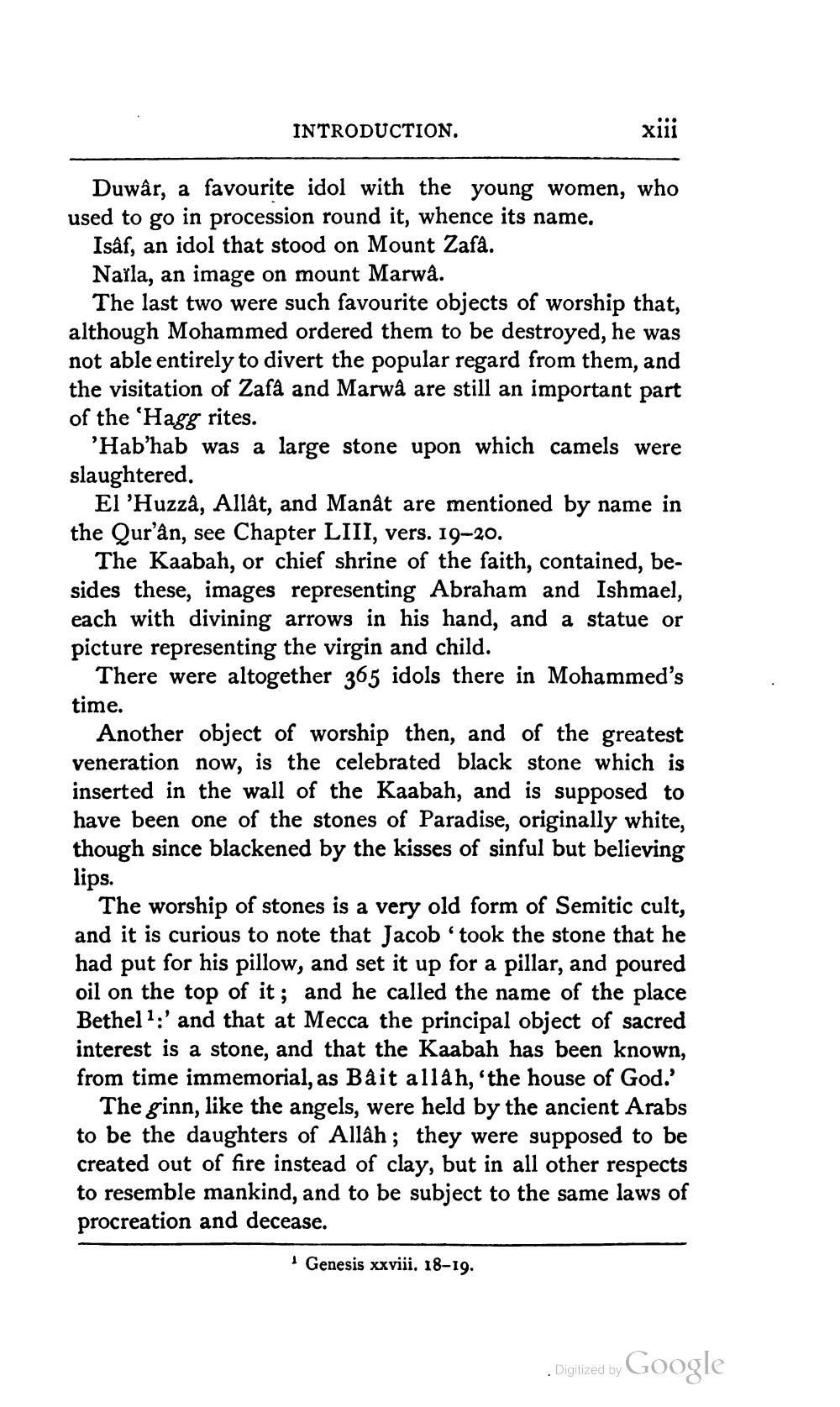________________
INTRODUCTION.
xiii
Duwâr, a favourite idol with the young women, who used to go in procession round it, whence its name.
Isâf, an idol that stood on Mount Zafa. Narla, an image on mount Marwa.
The last two were such favourite objects of worship that, although Mohammed ordered them to be destroyed, he was not able entirely to divert the popular regard from them, and the visitation of Zafa and Marwa are still an important part of the 'Hagg rites.
'Hab'hab was a large stone upon which camels were slaughtered.
El 'Huzza, Allåt, and Manât are mentioned by name in the Qur'an, see Chapter LIII, vers. 19-20.
The Kaabah, or chief shrine of the faith, contained, besides these, images representing Abraham and Ishmael, each with divining arrows in his hand, and a statue or picture representing the virgin and child
There were altogether 365 idols there in Mohammed's time.
Another object of worship then, and of the greatest veneration now, is the celebrated black stone which is inserted in the wall of the Kaabah, and is supposed to have been one of the stones of Paradise, originally white, though since blackened by the kisses of sinful but believing lips.
The worship of stones is a very old form of Semitic cult, and it is curious to note that Jacob 'took the stone that he had put for his pillow, and set it up for a pillar, and poured oil on the top of it; and he called the name of the place Bethel 1:' and that at Mecca the principal object of sacred interest is a stone, and that the Kaabah has been known, from time immemorial, as Bàit allah, 'the house of God.'
The ginn, like the angels, were held by the ancient Arabs to be the daughters of Allâh; they were supposed to be created out of fire instead of clay, but in all other respects to resemble mankind, and to be subject to the same laws of procreation and decease.
Genesis xxviii. 18-19.
Digitized by Google




